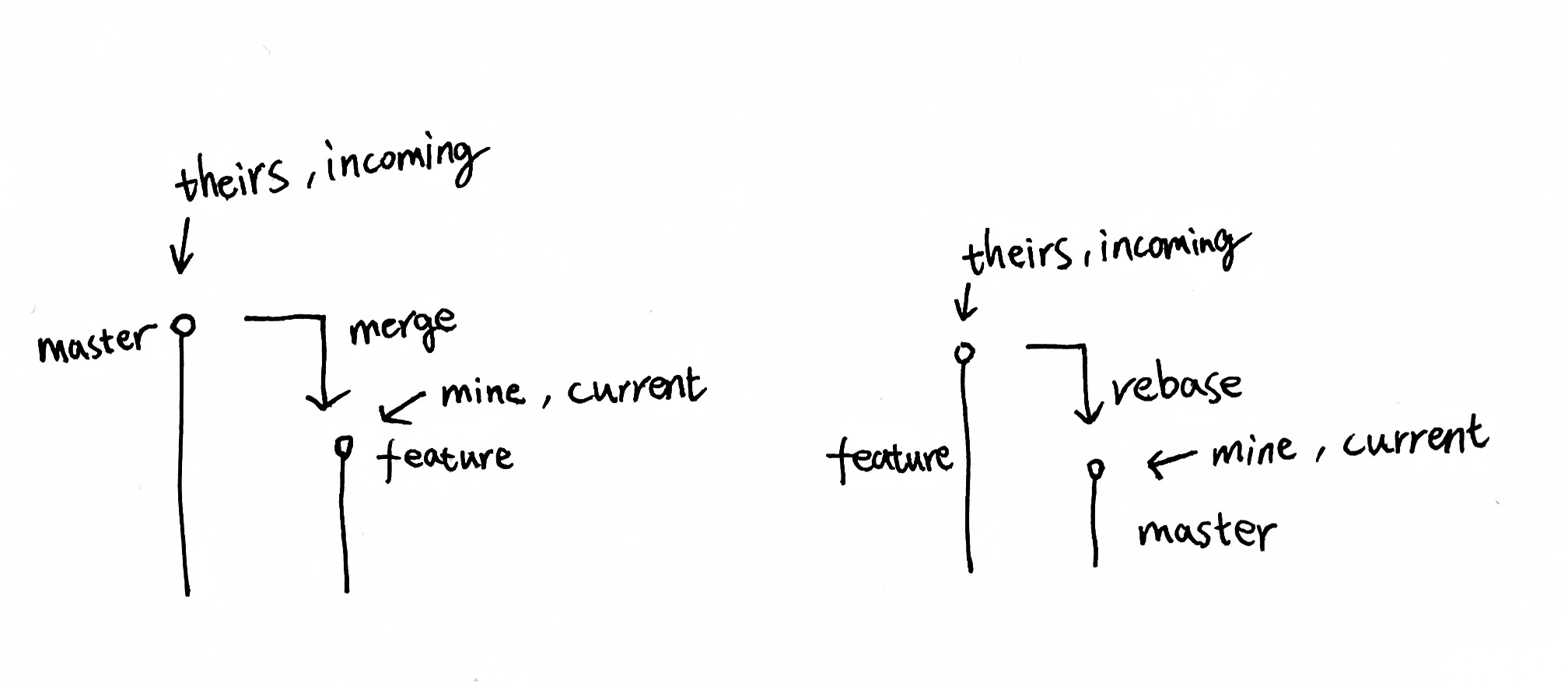Git
日常命令
# 查看配置项
git config --list
# tag 某个 commit
git tag r20191211_3.4.4 ff5aeaa
# 推送tag到远端
git push origin r20191211_3.4.4
# 推送分支到远端
git push -u origin branchname
# 删除远端tag
git push --delete origin tagname
# 查看 remote 信息
git remote show origin
# 强制重置 master 到当前的提交
git branch -f master
# 强制切到远端最新
git checkout -B master origin/master
# 查看某个文件的修改记录
git log filename
# 查看某个 commit 所在的分支
git branch -a --contains 749593c
# 直接复用上一次提交的 commit message 来提交
git commit --reuse-message=HEAD --reset-author
# 修改上次提交
git commit --no-verify --amend --no-edit
# 查看两次提交之间所有的提交
git log --perl-regexp --author="(yianzhou|zhouyian)" --pretty=short --ancestry-path 1a795d0ff7dc3c32ae5a003cae740ae054bd1e9f..abbd10baace5efde21e279b78ec76b4f9496bd19 > ~/Downloads/$(echo `date +%s` | rev).log
# 查看某个分支上我的提交
git log develop --author=yianzhou --pretty=short
# 查看所有我的提交
git log --author=yianzhou --pretty=format:%cd\ %H\ %an\ %s --date=format:'%Y-%m-%d %H:%M:%S' --all | git name-rev --stdin --refs="release/*" > ~/Downloads/git.log
# 查看一个commit的commit date,以本地时间为准
git show -s --format=%ad 39ff172891319b89187ec79899bcf8b6f329f8af --date=local
# 克隆指定分支,深度1
git clone --depth 1 --branch master https://github.com/flutter/flutter.git
# 克隆深度为 1 之后,如何拉取其它提交
git fetch --unshallow
# 删除所有tag然后重新拉取
git tag -l | xargs git tag -d && git fetch -t
# 找到所有在stage区的diff文件,并对其中的dart文件进行格式化
git diff --cached --name-only -- '*.dart' | xargs -I '{}' dart format {}
# 查看 merge request diffs
git log HEAD ^origin/develop --oneline --no-merges
# 添加远端
git remote add github https://github.com/flutter/engine.git
# 拉取远端分支
git fetch github master:master
日期格式可选项:
git log --date={relative,local,default,iso,rfc}
The author date notes when this commit was originally made (i.e. when you finished the git commit). According to the docs of git commit, the author date could be overridden using the --date switch.
The commit date gets changed every time the commit is being modified, for example when rebasing the branch where the commit is in on another branch (more).

gitignore
How to remove files that are listed in the .gitignore but still on the repository?
git rm -r --cached .
git add .
git commit -m "Drop files from .gitignore"
lfs
Git Large File Storage (LFS) is an open source Git extension for versioning large files by replacing large files with text pointers inside Git, while storing the file contents on a remote server.
远端还是保存了大文件的每一个版本,远端仓库的大小并不会因为用了 LFS 而减小。减小的是你的本地仓库。因为本地仓库中并不保留所有的文件版本,而是仅根据需要检出版本中必需的文件。
Step-by-step
Install: brew install git-lfs
Set up Git LFS for your user account (only once per user account): git lfs install
In Git repository where you want to use Git LFS: git lfs track "*.psd", or directly edit your .gitattributes
Make sure .gitattributes is tracked: git add .gitattributes
For any pre-existing files, use the git lfs migrate command.
Just commit and push as you normally would!
Migrate
The import mode converts Git files to Git LFS, while the export mode does the reverse, and the info mode provides an informational summary.
First, run git lfs migrate info to list the file types taking up the most space in your repository.
When converting files to or from Git LFS, the git lfs migrate command will only make changes to your local repository and working copy, never any remotes. This is intentional as the import and export modes are generally "destructive" in the sense that they rewrite your Git history, changing commits and generating new commit SHAs. Once you are satisfied with the changes, you will need to force-push the new Git history of any rewritten branches to all your remotes.(用了这个命令后,所有 commit 历史会被重写,拥有新的 SHA 值)
git lfs migrate import --include="opencv2" 将 opencv2 的二进制转换成 LFS,此时会看到本地磁盘里的文件变成了文本指针。
The working copies of these files can be repopulated with their full expected contents by using git lfs checkout
Config
查看所有配置:git config --list --show-origin
- 系统级别:
/usr/local/etc/gitconfig - 用户级别:
/Users/yianzhou/.gitconfig - git 目录级别:
.git/config
submodule
To suppress listing of 'modified content'/dirty submodule entries in status, diff, etc? Just add one line to that .gitmodules file:
[submodule "bundle/fugitive"]
path = bundle/fugitive
url = git://github.com/tpope/vim-fugitive.git
ignore = dirty
git submodule add <repository> [<path>] 默认将子模块 clone 到当前工作目录下
git submodule init 此命令通常仅在添加新子模块后(使用 git submodule add)运行一次
git submodule update 将子模块更新为父仓库指定的 commit
git submodule update --remote 更新子模块到上游仓库的最新 commit
git submodule update --init --recursive 递归地初始化并更新子模块及所有嵌套的子模块
git submodule status 列出所有子模块的当前状态
如何查找被删除的代码
如果你记得删除代码时的提交消息,可以使用以下命令搜索:git log --grep="关键字"
如果你记得被删除代码的一部分内容,可以使用 -S 选项来查找添加或删除该内容的提交:git log -S"代码片段"
如果你想要搜索的是正则表达式匹配的代码变动,可以使用 -G 选项:git log -G"正则表达式"
如果你知道代码被删除的文件��名,可以查看该文件的历史:git log -- 文件名
如果你不确定代码是在哪个提交中被删除的,可以使用 git bisect 来二分查找:git bisect start
- 标记当前版本中代码已经丢失:
git bisect bad - 标记一个你知道代码存在的旧版本:
git bisect good 标签或提交哈希 - Git 会检出一个中间的提交,你可以检查代码是否存在。如果代码存在,执行
git bisect good,如果代码丢失,执行git bisect bad。 - 重复上一步骤,直到 Git 找到引入变化的确切提交。
- 完成查找后,结束二分查找:
git bisect reset
如果你知道大概的时间范围,可以查看文件在某个时间段内的差异:git diff 开始哈希..结束哈希 文件名
如果你的仓库很大,一些命令可能需要较长时间来执行。